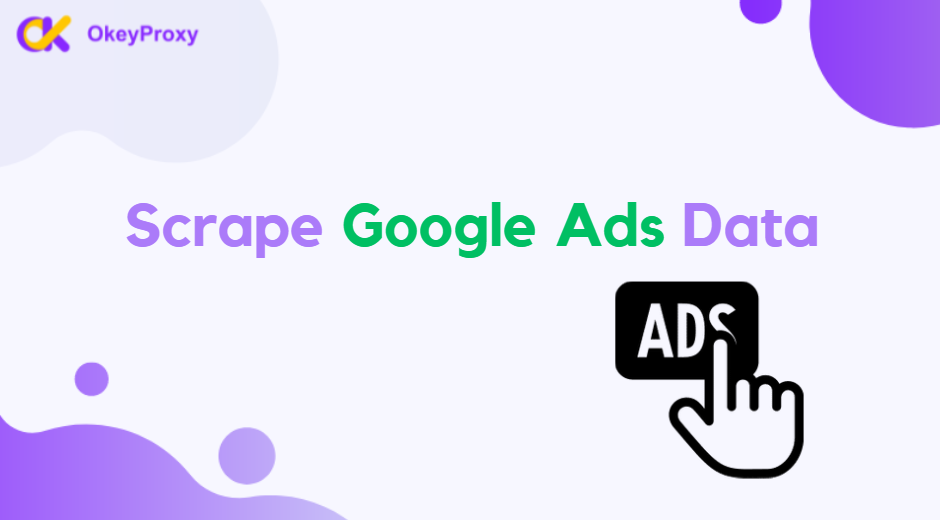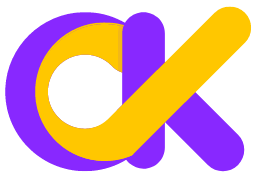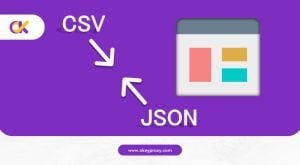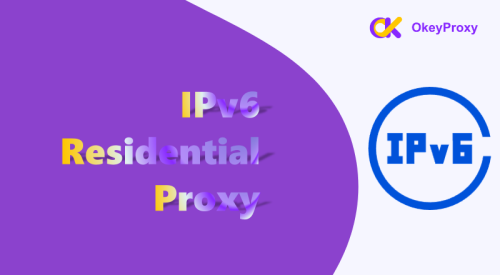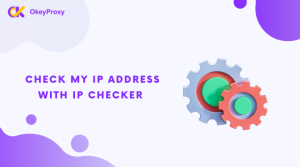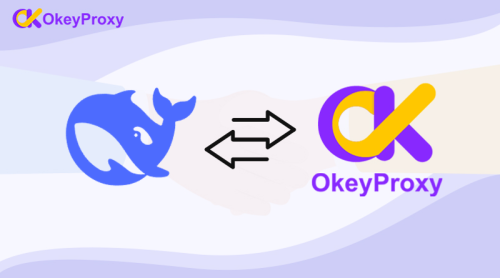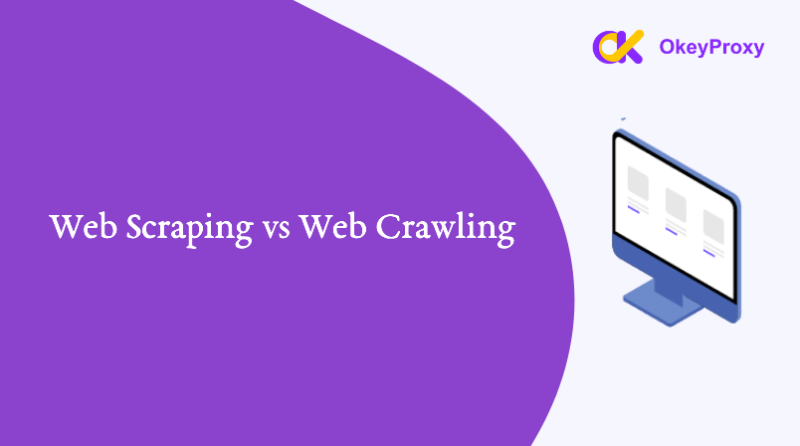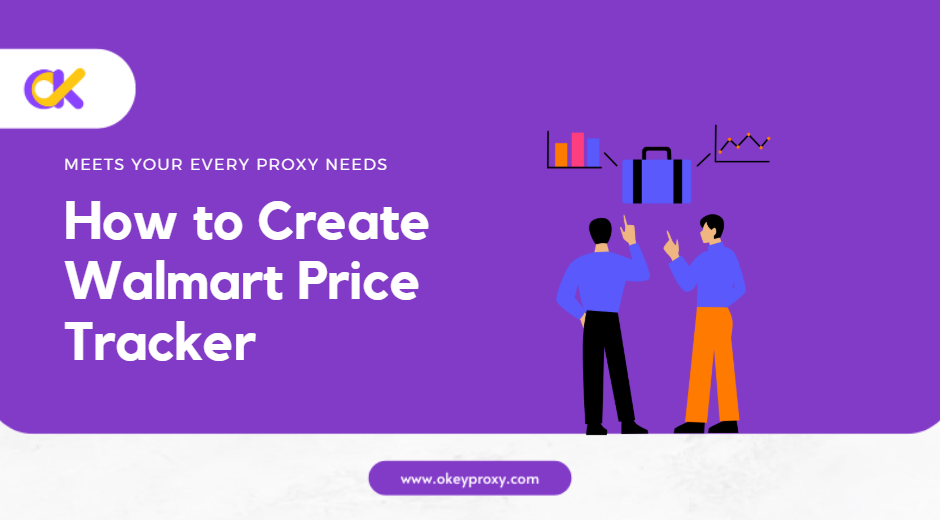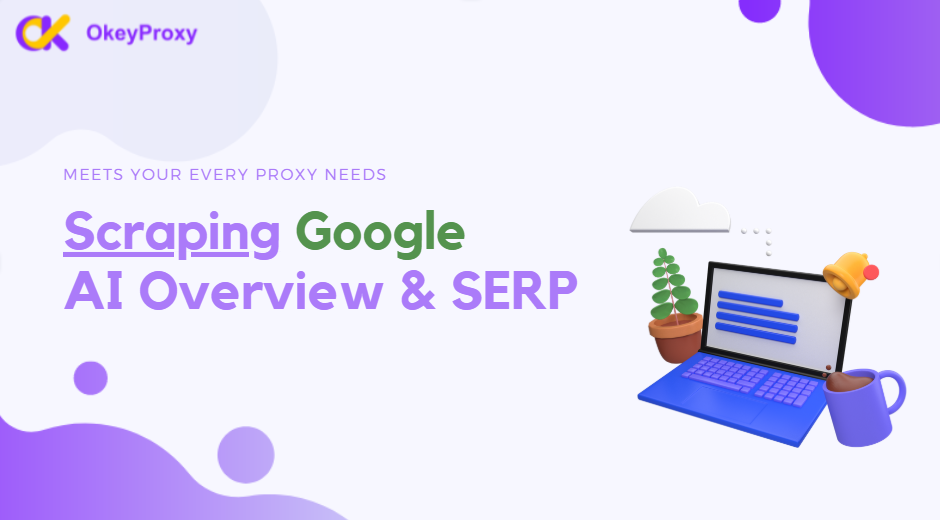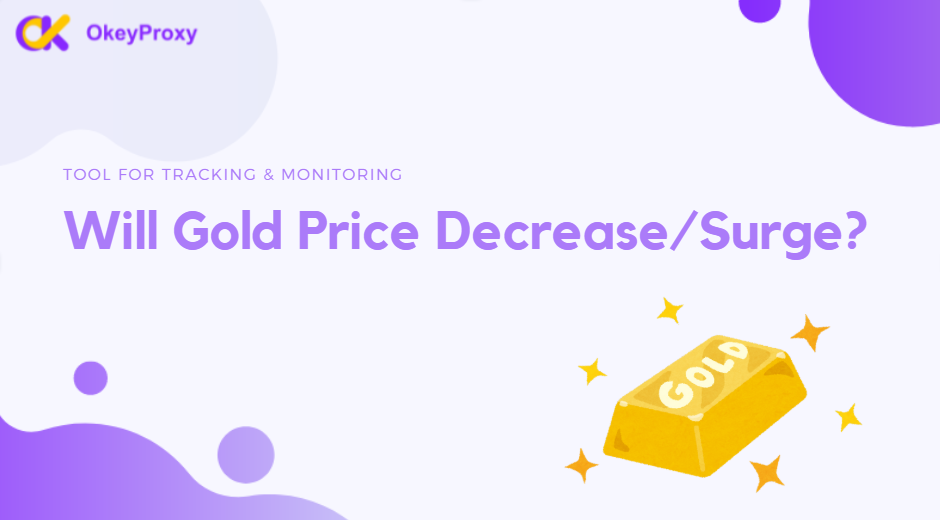In today’s competitive digital marketing landscape, gaining insights into Google Ads data can be a game-changer for businesses and developers. Whether it’s analyzing competitors’ ad strategies, tracking ad placements, or optimizing campaigns, scraping Google Ads results offers a treasure trove of actionable information.
However, extracting Google Ads data isn’t straightforward due to Google’s anti-bot measures, IP bans, and dynamic content rendering. This is where proxy solutions for Ads come into play, enabling developers to bypass restrictions and collect data at scale. In this article, the focus will be on how to scrape Google Ads data effectively, with practical methods and insights into leveraging tools like OkeyProxy for seamless data extraction.
Core Value of Google Ads Data Scraping
Google Ads data, when parsed, exists within an ads array in JSON format, containing critical elements such as block_position (top, bottom, middle, and right), title, phone, link, sitelinks, source, and more. This structured information allows marketers to understand ad visibility, messaging, and targeting strategies.
For developers, the challenge lies in accessing this data without triggering Google’s defenses, especially when handling bulk requests across multiple search queries like “top sights Paris,” “hotels in Dusseldorf,” or “2025 SUVs for sale” as seen in various use cases. The primary user demands include avoiding IP blocks, managing high request volumes, and ensuring data accuracy despite personalized ad rendering.
Key Challenges in Scraping Google Ads Data
Scraping Google Ads data presents several technical hurdles:
- Anti-Bot Protection: Google employs sophisticated mechanisms like CAPTCHAs and rate-limiting to deter automated scraping.
- Dynamic Content: Ads are often personalized based on location, language, and user behavior, making consistent data collection difficult.
- Bulk Scraping Needs: Developers need to scrape data across diverse queries and geographies without detection, which demands robust IP rotation.
- Data Parsing Complexity: Extracting structured JSON data from ads arrays requires precise tools and handling of nested elements like sitelinks or thumbnails.
Addressing these pain points requires a reliable proxy solution tailored for scraping tasks, and this is where OkeyProxy stands out with its residential proxy offerings.
How to Scrape Google Ads Data: 3 Practical Methods
Below are three actionable methods to scrape Google Ads data, designed for developers and technical users seeking reliable results. Each method incorporates proxy usage to overcome common obstacles.
Method 1: Set Up a Basic Scraping Script with Proxy Integration
Start by building a simple script in a language like Python or Ruby to send HTTP requests for Google search results. The goal is to target specific queries and extract the ads array from the JSON response. Use a rotating proxy to mask the origin IP for each request. With OkeyProxy’s residential proxies, developers can access a vast pool of IPs that mimic real user behavior, reducing the risk of detection. Configure the proxy settings in the script to rotate IPs per request or session, ensuring uninterrupted data collection.
Method 2: Leverage Headless Browsers with Proxy Support for Dynamic Ads
For ads rendered dynamically via JavaScript, headless browsers like Puppeteer can simulate a real user environment. However, Google can still detect automated browser fingerprints. Pairing a headless browser with OkeyProxy’s residential proxies helps disguise the scraping activity as organic traffic. Set the browser to route traffic through different IPs for each session, focusing on specific ad block positions (e.g., top or right) as outlined in the JSON structure. This method ensures accurate scraping of personalized or location-based ads.
Method 3: Scale Up with Bulk Scraping Using Proxy Pools
For large-scale projects involving multiple search terms or regions, bulk scraping is essential. Create a system to queue requests for various keywords like those for hotels or tourist sites, and distribute them across a pool of proxies. OkeyProxy offers high-speed residential proxies that support concurrent requests without triggering rate limits. Developers can automate this process by integrating API calls to rotate IPs dynamically, ensuring comprehensive data collection across diverse ad campaigns without downtime.
Deep Dive: Overcoming Technical Challenges in Google Ads Scraping
Let’s explore the critical technical aspects of scraping Google Ads data and how OkeyProxy provides tailored solutions to address user pain points.
1. Handling Anti-Bot Mechanisms and IP Bans
One of the most significant barriers is Google’s anti-bot system, which flags repetitive requests from a single IP. When scraping data like ad titles, links, or sitelinks from the JSON ads array, a static IP will quickly be blocked. OkeyProxy’s residential proxies solve this by offering a rotating IP pool sourced from real devices worldwide.
Developers can configure requests to switch IPs after a set number of queries or time intervals, mimicking natural user patterns. This reduces CAPTCHA challenges and ensures continuous scraping. A practical tip is to limit requests to 5-10 per minute per IP, a threshold OkeyProxy’s dashboard allows users to customize easily via its intuitive interface at OkeyProxy.
2. Managing Location-Based Ad Variations
Ads often vary by location, as seen in search results tailored for Austin, Texas, or other regions. Developers targeting specific geographies need proxies that can spoof local IPs.
OkeyProxy excels here by providing geo-targeted residential proxies, enabling users to scrape ads as if browsing from Paris, Dusseldorf, or Dubai. This capability is crucial for competitive analysis in localized markets. Users can select country or city-specific IPs directly from the OkeyProxy platform, integrating them into scripts or tools with minimal setup time.
3. Ensuring Data Integrity and Parsing Accuracy
Extracting structured data from nested JSON arrays, including block positions and extensions, requires precision to avoid missing key fields. While tools like headless browsers help render full pages, they can be resource-intensive. OkeyProxy complements this by ensuring stable connections during long scraping sessions, preventing data loss from dropped requests.
Additionally, pairing OkeyProxy with lightweight parsing libraries minimizes server load, allowing developers to focus on data analysis rather than connection issues.
OkeyProxy’s Edge in Google Ads Scraping Solutions
Compared to alternatives like SmartProxy, OkeyProxy stands out with its user-centric features for developers. The service offers over 150 million residential IPs across 200+ countries, ensuring unmatched coverage for global ad scraping. Its high success rate in bypassing anti-bot systems stems from advanced rotation algorithms and real-user IP profiles.
Top-Notch Socks5/Http(s) Proxy Service

- Rotating Residential Proxies
- Static ISP Residential Proxies
- Datacenter Proxies
- More Custom Plans & Prices

Furthermore, OkeyProxy provides 24/7 technical support and detailed documentation, making integration into existing scraping workflows seamless.
Whether it’s a small script for competitor ad analysis or a large-scale project tracking thousands of keywords, OkeyProxy delivers speed, reliability, and scalability. Developers can start with a free trial to test IP rotation on sample queries, experiencing firsthand how the service handles bulk data extraction challenges.
FAQs on Scraping Google Ads Data with Proxy Solutions
1. How Can I Scrape Google Ads Data Without Getting Blocked by Anti-Bot Systems?
Scraping Google Ads data often triggers anti-bot mechanisms due to repetitive requests from a single IP, especially when extracting structured information from the ads array in JSON output. The challenge lies in avoiding CAPTCHAs and IP bans while fetching details like ad titles or block positions (e.g., top or right). OkeyProxy’s dynamic residential proxies offer a solution by rotating IPs from a vast pool of real-user addresses, mimicking organic browsing behavior. By configuring the proxy to switch IPs after a set number of requests or time intervals, users can maintain uninterrupted access. For bulk scraping, OkeyProxy ensures high success rates by distributing requests across diverse IPs, preventing detection even during high-volume data collection.
2. How Do I Handle Location-Specific Google Ads Data for Different Markets?
Google Ads are often personalized based on geographic location, affecting the ads array output with varying block positions and sitelinks depending on the user’s region. This poses a difficulty for users aiming to scrape localized data for multiple markets simultaneously. OkeyProxy addresses this with geo-targeted dynamic residential proxies, allowing users to select IPs from specific countries or cities. For instance, when scraping ads for a query like “hotels in Dusseldorf,” users can route requests through German IPs to capture relevant ad content. This capability is crucial for advertisers analyzing regional campaigns, and OkeyProxy’s intuitive dashboard simplifies the process of assigning location-specific IPs for bulk scraping tasks.
3. What Challenges Arise When Parsing Complex JSON Ads Data, and How Can Proxies Help?
Extracting data from the ads array in JSON format can be complex due to nested structures containing fields like sitelinks, source, and block_position (top, bottom, middle, right). The technical difficulty lies in ensuring complete data retrieval without connection interruptions or missing key elements during bulk scraping.
While proxies don’t directly parse JSON, OkeyProxy’s dynamic residential proxies ensure stable, uninterrupted connections by rotating IPs to avoid rate-limiting. This stability allows developers to focus on building robust parsing scripts without worrying about dropped requests. Additionally, OkeyProxy’s high-speed connections support real-time data extraction, which is vital when handling large datasets with intricate ad details.
4. Can I Scrape Google Ads Data at Scale for Multiple Keywords Without Performance Issues?
Bulk scraping Google Ads data across numerous keywords or queries (e.g., “top sights Paris” or “2019 SUVs for sale”) requires handling high request volumes without triggering Google’s defenses or facing performance bottlenecks. The challenge is maintaining speed and reliability while accessing diverse ad elements like links and extensions.
OkeyProxy’s dynamic residential proxies are optimized for scalability, supporting concurrent requests through a massive IP pool. Users can automate scraping for thousands of keywords by integrating OkeyProxy’s API to rotate IPs dynamically per request or session. This ensures consistent performance, even during peak scraping activities, making it ideal for advertisers running large-scale competitive analysis in the ad area.
5. How Do I Ensure Compliance and Ethical Scraping When Using Proxies for Google Ads Data?
When scraping Google Ads data, users must navigate privacy regulations like GDPR or CCPA, especially since the process involves accessing public ad details such as titles, sources, and tracking links from the JSON ads array. The concern is avoiding legal risks while conducting bulk data extraction. OkeyProxy’s dynamic residential proxies prioritize ethical scraping by using IPs sourced from consenting real users, aligning with privacy standards.
Furthermore, OkeyProxy offers tools to limit request rates and customize scraping patterns, reducing the likelihood of aggressive behavior that could violate terms of service. For advertisers, this means leveraging OkeyProxy’s solutions in the advertising area to gather competitive insights responsibly, ensuring compliance without sacrificing data quality.
Industry Insights and Predictions for 2025
Based on current trends and historical challenges in web scraping, it’s reasonable to predict that Google will continue enhancing its anti-scraping measures in 2025, potentially integrating more AI-driven detection systems. This will make proxy solutions even more critical for developers. Additionally, as privacy regulations tighten globally, ethical scraping practices will gain prominence, pushing users toward compliant tools like residential proxies over datacenter IPs.
OkeyProxy is well-positioned to lead in this space by prioritizing user anonymity and legal data collection standards. The growing reliance on Google Ads for hyper-personalized marketing also suggests that scraping demand will surge, particularly for Performance Max campaign insights, reinforcing the need for robust proxy-backed solutions.
Conclusion
Scraping Google Ads data opens up endless possibilities for competitive intelligence and campaign optimization, but it demands the right tools to overcome technical barriers.
With OkeyProxy’s residential proxies, developers can tackle IP bans, location restrictions, and data parsing challenges head-on. By following the outlined methods—basic scripting, headless browser usage, and bulk scraping—technical users can build efficient workflows tailored to their needs. Visit Residential Proxies – 150M+ Unique IPs Pool- OkeyProxy today to explore how this solution can transform data extraction tasks into a streamlined, ban-free process.

